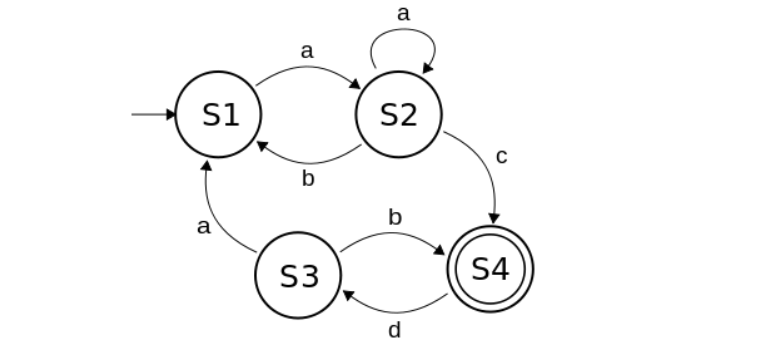Answered step by step
Verified Expert Solution
Question
1 Approved Answer
PROLOG Here is a DFA and its transitions: startnode(s1). finalnode(s4). transition(s1, a, s2). transition(s2, a, s2). transition(s3, a, s1). transition(s2, b, s1). transition(s3, b, s4).
PROLOG
Here is a DFA and its transitions:

startnode(s1). finalnode(s4). transition(s1, a, s2). transition(s2, a, s2). transition(s3, a, s1). transition(s2, b, s1). transition(s3, b, s4). transition(s2, c, s4). transition(s4, d, s3).
Create a predicate in Prolog, states(X), where X is a list of symbols, that shows the states it traverses from. Before that it should be checked that we have the correct input symbols (only a, b, c, d).
I am giving some examples:
?-states([a,a,c]).
S1
S2
S2
S4
true
?-states([a,c,c]).
false
I hope it is clear.
a a Si S2 b a b S3 S4 dStep by Step Solution
There are 3 Steps involved in it
Step: 1

Get Instant Access to Expert-Tailored Solutions
See step-by-step solutions with expert insights and AI powered tools for academic success
Step: 2

Step: 3

Ace Your Homework with AI
Get the answers you need in no time with our AI-driven, step-by-step assistance
Get Started


